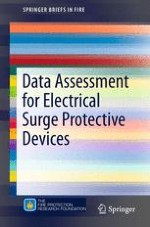2015 | OriginalPaper | Buchkapitel
3. Surge Protection Fundamentals
verfasst von : Eddie Davis, Nick Kooiman, Kylash Viswanathan
Erschienen in: Data Assessment for Electrical Surge Protective Devices
Verlag: Springer New York
Aktivieren Sie unsere intelligente Suche, um passende Fachinhalte oder Patente zu finden.
Wählen Sie Textabschnitte aus um mit Künstlicher Intelligenz passenden Patente zu finden. powered by
Markieren Sie Textabschnitte, um KI-gestützt weitere passende Inhalte zu finden. powered by
